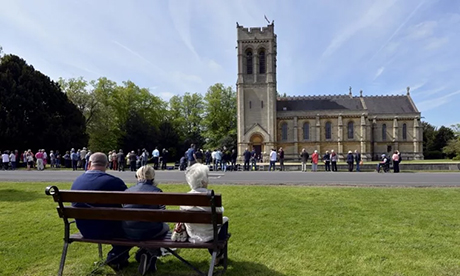The Church of England is considering renting out underused parish churches due to decreased regular worship attendance.
The move aims to preserve the potential for these churches to reopen in the future rather than be sold off after merging with larger parishes.
This proposal is set for discussion by the General Synod, the Church’s legislative body.
The Telegraph reports that the plan suggests renting the underutilised buildings to local authorities, other Christian denominations, or different institutions through shared ownership agreements.
The Church Commissioners for England, the group in charge of managing the Church’s $13 billion endowment fund and investment portfolio, proposed this plan.
The Archbishop of Canterbury leads this group.
Proponents of the plan will present it for debate at the Synod this week.
They believe in allowing these churches to hibernate rather than abandon them, providing an opportunity for the Church and community to stay open to new possibilities for service and witness as circumstances evolve.
Critic of the archbishops for overseeing the rapid decline of parishes, campaigners view this proposal as a significant victory.
The Rev. Marcus Walker, the chairman of the Save the Parish campaign group, applauded the plan as a win for local parishioners.
However, this proposal requires parishioners from churches that go into hibernation to seek alternative worship locations.
Drop in attendance a personal failure
Despite this positive reception, the plan faces the backdrop of a steep decline in church attendance over the past decade.
In June, Archbishop of Canterbury Justin Welby acknowledged the drop in attendance during his tenure as a personal “failure.”
The report on the rental plan includes a “theological introduction” by the Bishop of Ramsbury, Andrew Rumsey.
The bishop emphasises the significant burden of governance on small communities and the challenges local volunteers face to keep their churches open.
Rumsey highlights the premature closure of architectural legacies due to stress and lack of resources.
He proposes a fallow or “jubilee” period for church buildings, allowing them to rest and recover, mirroring the natural cycles of growth and abundance.
This approach aims to preserve the common ground between the church and the neighbourhood while waiting for future growth.
The statistics paint a stark picture of the decline in church attendance and closures.
Between 2010 and 2019, 423 churches closed and, from 1987 to 2019, nearly 1,000 churches shut down, according to CofE data analysed by The Telegraph.
The number of operational churches now stands at about 15,496. Furthermore, according to the Office for National Statistics, the share of Christians in England and Wales has also decreased, dropping from 59.3% in 2011 to 46.2% in 2021.
Sources
Additional readingNews category: Great reads, Palmerston, World.




